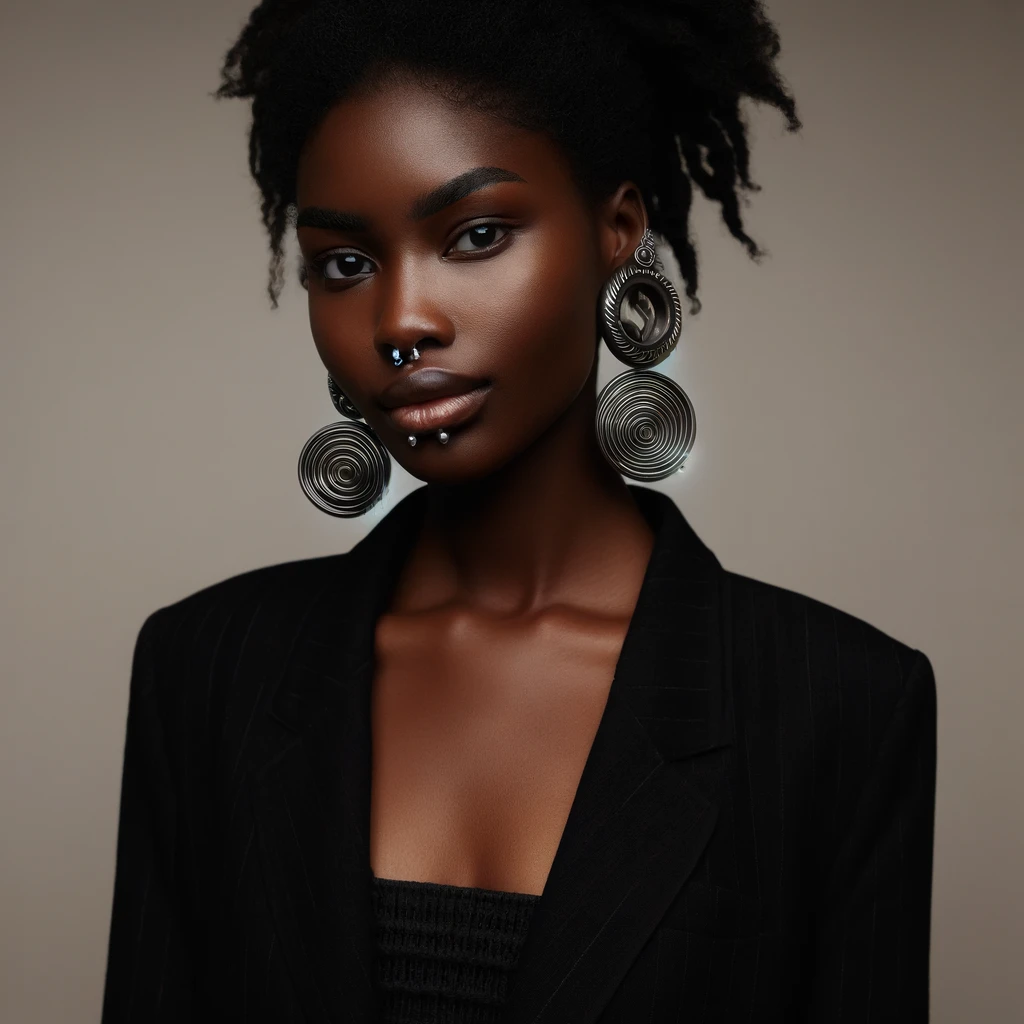Stretching earlobes, a practice deeply rooted in various cultures worldwide and popular in contemporary fashion, involves gradually enlarging piercings to accommodate larger jewelry. This art form not only reflects personal style and cultural heritage but also requires meticulous care to ensure safety and maintain aesthetics. This comprehensive guide will navigate through the essential aspects of stretched earlobes, including proper care techniques, suitable materials, styling tips, and even repair methods.

Understanding Earlobe Stretching
Earlobe stretching, often referred to as “gauging,” is a process where earlobe piercings are incrementally enlarged using various tools and jewelry. This practice can be traced back thousands of years and is seen in ancient civilizations across Africa, Asia, and the Americas.
The Stretching Process for Stretched Earlobes
- Starting Small: Begin with a small gauge, typically just one size up from a standard ear piercing.
- Gradual Increases: Increase the size gradually, moving to the next gauge only when your ears have fully healed from the previous stretch.
- Patience is Key: Rushing the process can lead to tears, scars, and even blowouts, where the skin inside the piercing thins and protrudes through the back of the lobe.
Healing and Maintenance of Stretched Earlobes
- Hygiene: Cleanliness is crucial. Regularly clean your earlobes and jewelry with saline solution or gentle soap and water.
- Healing Oils: Products like jojoba oil, emu oil, and vitamin E oil can enhance elasticity and aid in healing.
- Monitor for Signs of Trouble: Redness, pain, or discharge are indicators of potential problems. If these occur, consider downsizing and consulting a professional.

Best Materials for Stretching
Choosing the right materials for your stretch is vital for minimizing risks and ensuring healthy stretching. Here are some of the safest materials:
- Surgical Stainless Steel: Hypoallergenic and easy to clean.
- Titanium: Lightweight and less likely to cause allergic reactions compared to other metals.
- Glass: Smooth, non-porous, and available in various beautiful designs.
- Silicone: Flexible and comfortable, ideal for fully healed stretches but not recommended for initial stretching.
Avoid materials like acrylic and nickel, which can irritate the skin and lead to infections.
Styling and Personalizing Stretched Earlobes
Stretched earlobes offer a unique canvas for personal expression. Here’s how to style them:
- Plugs and Tunnels: Available in various materials and designs, from understated to bold.
- Hangers and Weights: Best used occasionally to prevent strain on the lobes.
- Layering: Combine different jewelry types for a distinctive look.
Remember, the weight and size of the jewelry should be appropriate to avoid overstretching.

Repair and Reversal Options for Stretched Earlobes
Sometimes, the stretching journey might take a turn, requiring repair or reversal. If lobes are overstretched, torn, or you simply change your mind:
- Downsizing: Gradually wearing smaller jewelry can help shrink the lobes naturally.
- Surgical Options: For significant enlargement or damage, reconstructive surgery might be necessary.
Stretched earlobes are not only a bold fashion statement but also a commitment to ongoing care and style. Proper practices ensure that your stretched lobes remain healthy, attractive, and distinctly yours. Whether you’re just starting or are looking to enhance your existing stretches, remember that the journey is as personal as the style it represents.





